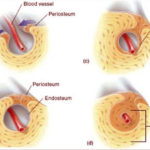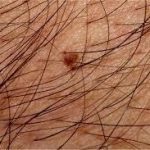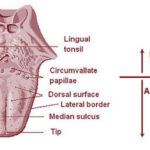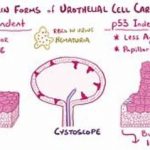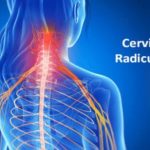Knee Ligaments
What are Knee Ligaments?
The knee is the largest joint in the body who function is to bend (flex) and straighten (extend) in order to allow movement of the body e.g. walking, running, sitting, kicking or squatting. There are four knee ligaments (thick bands of tough tissue) that serve to maintain the stability of the knee joint. Knee ligament impose limitations on the movement of the knee allowing it to concentrate forces of the muscles on extension and flexion.1

Anatomy
On the sides of the knee are the medial collateral ligament (MCL) and the lateral collateral ligament (LCL). These two prevent sideways sliding of the knee joint ad also brace it against unusual movement. Forming an X on the inside of the knee are the anterior cruciate ligament (ACL) as well as the posterior cruciate ligament (PCL). The two prevent back and forth sliding of the knee during movement.
Two shock absorbing cartilages called menisci are also found inside the knee to prevent friction between the moving bones. Except the ligaments the knee is also made up of the following
- Bones: thighbone (femur), shinbone (tibia), kneecap (patella).
- Muscles: thigh muscles (quadriceps) and rear thigh muscles (hamstrings)
- Tendons connect muscles to bones: quadriceps tendons, patellar tendons.
Types & Causes of Knee Ligament Injury
When injured a knee ligament may get sprained (stretched) or ruptured (torn). Tears of the ligaments are more serious and can either be partial with just some of the fibers constituting the ligament torn or complete where the ligament is torn through entirely.
Anterior cruciate ligament (ACL) injuries often occur during demanding sports like football or basketball due to rapid changing of direction or improper landing from a jump.
Posterior cruciate ligament injuries are usually caused by a direct blow to the front of the knee like in a motor vehicle accident or aggressive sports contact. These tears are often partial and if not exacerbated usually heal on their own.
Injuries of the medial lateral ligament are caused by a contact force that pushes or displaces the knee sideways and are usually caused by sporting activities e.g. falling sideways knee first or getting a kick in the knee from the side.
Lateral collateral ligament can be injured by blows to the inside of the knee that push outward. Tears of the lateral collateral ligament are rarer than other injuries to the knee.2,3
Symptoms
Symptoms of knee ligament injury are similar regardless of which particular ligament is injured. The extent of the symptom depends on the severity of the ligament injury – partial or complete.
- Popping or snapping noise may be heard or felt when the injury inflicted causes a complete ligament tear.
- Swelling may occur at the site of the injury due to internal bleeding in the knee.
- Tenderness around the knee when touched.
- Bruising may appear on the knee for some sufferers.
- Feeling of looseness, instability or disconnect in the knee that may cause it to give in when attempting movement.
- Pain whenever attempting to move the knee maybe severe or mild depending on the extent of injury.
- Walking with a limp due to instability in the knee
Diagnosis
The doctor performs a physical examination on the knee to determine the extent of swelling if any. To test the ligaments the doctor also moves the leg gently into different positions
Doctor inquires about the symptoms e.g. when the pain and or swelling if any started. Partial tears cause little swelling that may not appear for up to two hours. Complete tears cause a large swelling relatively fast.
An X-ray or ultrasound scan may be ordered by the doctor if they suspect or need to rule out the possibility of a broken bone.
MRI can be performed to check the type of ligament injured and the extent of the injury.3,4
Treatment of Knee Ligament Injuries
Swollen knee joints are first drained before further treatment is attempted. The doctor uses a needle to pierce the skin around the injury site and drains the fluid into the syringe then cleans the puncture to prevent infection in the knee joint.2,3
Non surgical treatment options are usually prescribed for mild or partial tears
- Doctors recommend immobilization when further movement may extend the injury or impede healing. The patient may have to wear a knee brace or use a pair of crutches that prevents the knee from moving and keep weight of the leg and the knee.
- Anti-inflammatory medication that are non-steroidal e.g. ibuprofen can be prescribed to ease pain at the site of injury and reduce swelling.
- Paracetamol may be prescribed to ease the pain.
- Physical therapy is prescribed with specific exercises that strengthen the leg muscles and restore normal function to the knee.
Reconstructive knee surgery is typically required for severe injuries affecting the cruciate ligaments (ACL or PCL) that cause either a complete tear or stretch the ligament beyond its natural limits.
- Arthroscopic surgery is usually used to repair torn ACL or PCL by making small incisions and using miniature instruments to repair the damage.
- Traditional open surgery where larger incisions are made and the surgeon has better view and handling of the ligaments can also be used.
Type of surgery used for treatment is dependent on the surgeon’s experience and the type or extent of the injury.
Prevention
Knee ligament injuries can be prevented though a number of ways:
- Follow proper practice when exercising. Begin with warm up exercises before starting the regimen.
- Regularly exercise your thigh muscles with regular stretches.
- Avoid making sudden turns or twisting especially when moving at fast speed.4
Home Remedies
- The RICE method is the most effective home remedy for an injured knee especially immediately after the injury has been inflicted.
- Rest the knee and avoid putting too much weight on it as this may make a mild injury more severe.
- Wrap ice in a clean towel and apply to the knee for about half an hour several times a day.
- Compress the knee using a knee brace home-made elastic bandage that is not too tight to limit the swelling.
- Elevating the knee above the heart e.g. by placing the affected foot on pillows to reduce the swelling.4,5
Reference List
- Knee Injury (ACL, MCL, LCL) Symptoms, Signs, Diagnosis. e medicine health – https://emedicinehealth.com/knee_injury/article_em.html
- Common Knee injuries. OrthoInfo AAOS – https://orthoinfo.aaos.org/topic.cfm?tpoic=a00325
- Knee Ligament Injuries – Knee Pain after Running. Patient Info – https://patientinfo/health/knee-ligament-injuries-leaflet
- Knee Ligament Injuries ACL, PCL and more. WebMD – https://webmd.com/fitness-exercises/guide/knee-ligament-injuries
- Knee Ligament Repair. Johns Hopkins Medicine – https://hopkinsmedicine.org/healthlibrary/test_procedures/orthopaedic/knee_ligament_repair_92,P0765/


